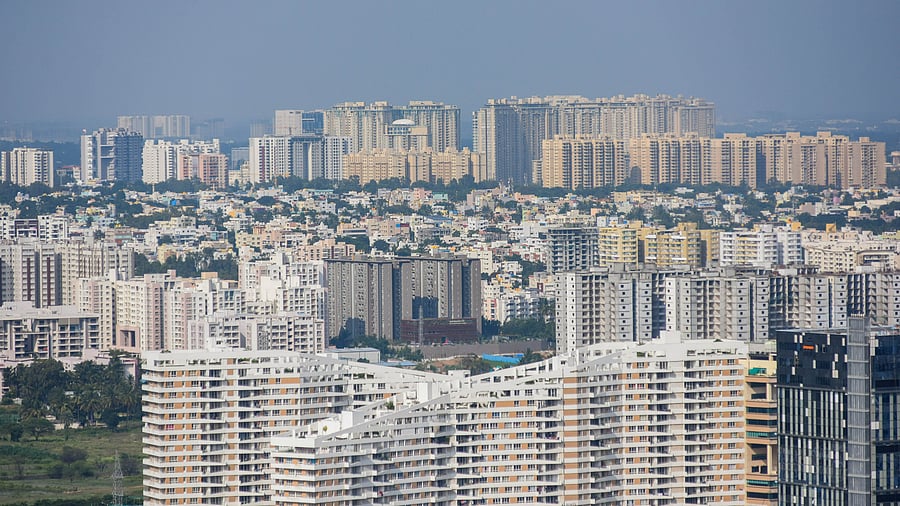
An aerial view of Bengaluru city near Nagavara lake, October 21, 2022.
Credit: DH PHOTO/PUSHKAR V
Bengaluru: After a pullback in commercial real estate investment, global investment into the Asia Pacific (APAC) has trended higher for the past four consecutive quarters, led by US-based investors. Many US-headquartered companies have already been expanding into APAC over the years.
The region has more than 230 million square feet of office space scheduled to complete by 2026.
However, with the impact of the tariffs, leasing and investment activity in the property sector overall will likely slow down in the near term, according to a report by Cushman and Wakefield out on Wednesday.
The current fluid environment is likely to cause delays in decision making and therefore dampen overall demand for space, as supply chains shift, explained the report. There is also a likelihood of more negative impacts, the longer the uncertainty prevails, pointing to a weaker near-term demand outlook.
The outlook for construction costs is mixed, which may prompt a risk-off strategy and curb supply pipelines, at least until greater clarity emerges. Existing assets will likely benefit.
Property values are generally expected to remain resilient and trend higher on the other side of the uncertainty.
Raw material input costs in APAC may be cheaper in the near term due to excess availability, but they need to be considered against other factors such as local labour costs and land pricing, which play a larger role in overall project viability.
However, past experience has shown that the region can rebound quickly when conditions improve.
“US recession odds are rising and short-term stagflation, meaning slowing economic growth and sticky inflation, is emerging as the new consensus for 2025,” the report stated, adding that the situation is fluid and 2026 may see growth accelerate.
